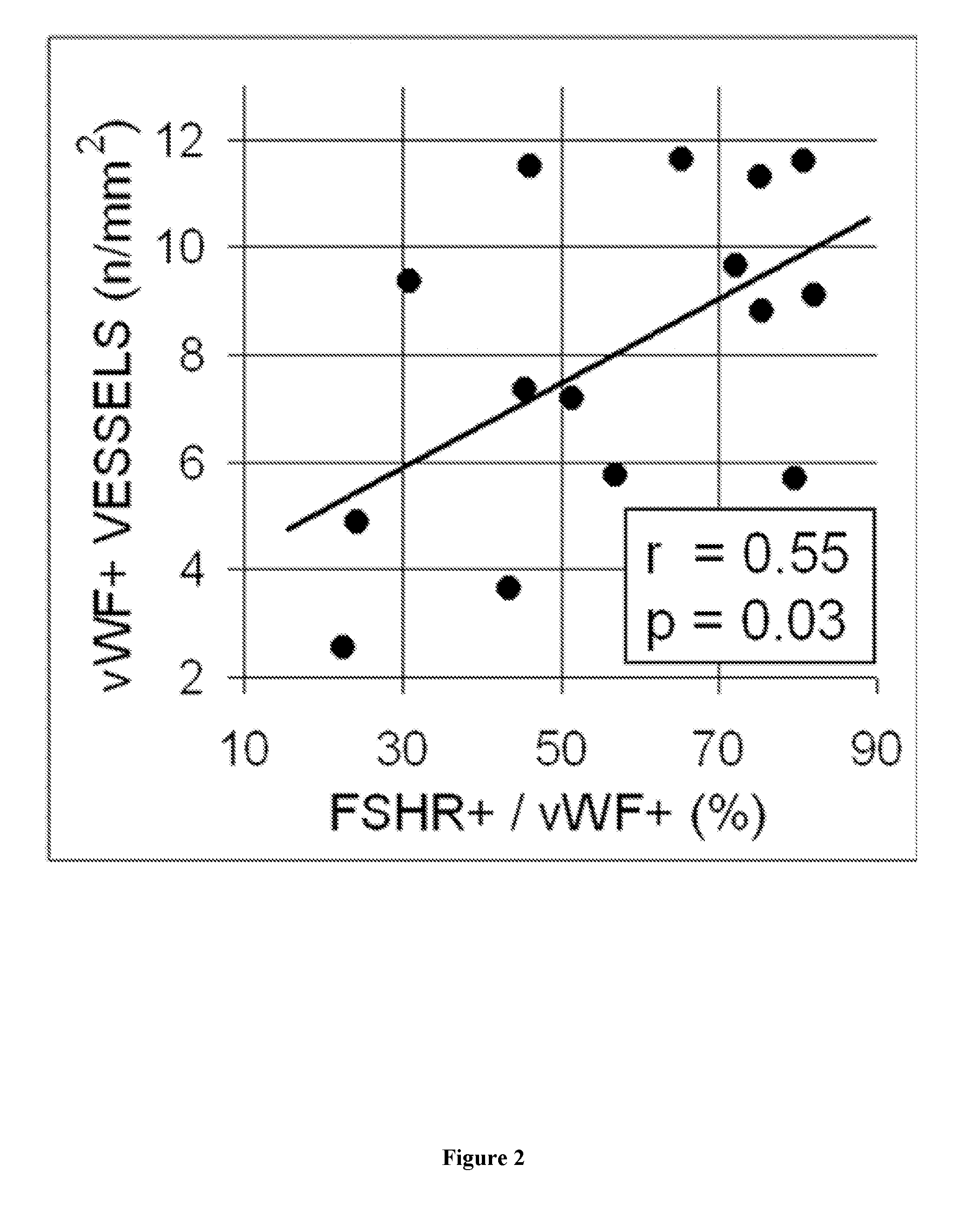Novel methods for predicting the responsiveness of a patient affected with a tumor to a treatment with a tyrosine kinase inhibitor
a technology of tyrosine kinase and patient, applied in the field of patient responsiveness prediction, can solve the problems of inability to discriminate and/or predict the preferential efficacy of tki vegfr2 inhibitors, immunotherapy (interleukin-2, interferon-), and no predictive clinical or biological factors of response have been identified allowing a better selection
- Summary
- Abstract
- Description
- Claims
- Application Information
AI Technical Summary
Benefits of technology
Problems solved by technology
Method used
Image
Examples
example
FSHR Level Expression in a Renal Tumor Biopsy of Patients Affected by a Metastatic Renal Cell Carcinoma Predicts Responsiveness to Sunitinib
Material & Methods
[0091]All patients were diagnosed with advanced metastatic renal cell clear cell carcinoma and subjected to surgery for removal of the primary tumor. The tumor tissue was fixed in formaldehyde, and embedded in paraffin. Sections were cut and stained for the FSH receptor using the monoclonal antibody FSHR323, followed by a secondary HRP- or Alexa555-coupled antibody. The density of vessels in the tumor tissue was determined by microscopy using a 20× objective. Starting at the border between the normal and the tumor tissue and moving towards the interior of the tumor, digital photographs were taken of every other field. The number of FSHR-positive vessels in each image was counted in 20 images from each tumor.
[0092]The patients were subjected to Sutent treatment for >=3 months with a dose of 50 mg / day for 4 weeks followed by 2 we...
PUM
| Property | Measurement | Unit |
|---|---|---|
| median survival time | aaaaa | aaaaa |
| density | aaaaa | aaaaa |
| light microscopy | aaaaa | aaaaa |
Abstract
Description
Claims
Application Information
 Login to View More
Login to View More - R&D
- Intellectual Property
- Life Sciences
- Materials
- Tech Scout
- Unparalleled Data Quality
- Higher Quality Content
- 60% Fewer Hallucinations
Browse by: Latest US Patents, China's latest patents, Technical Efficacy Thesaurus, Application Domain, Technology Topic, Popular Technical Reports.
© 2025 PatSnap. All rights reserved.Legal|Privacy policy|Modern Slavery Act Transparency Statement|Sitemap|About US| Contact US: help@patsnap.com



